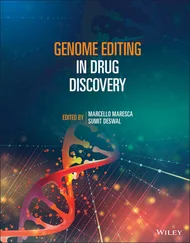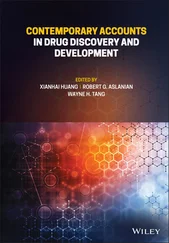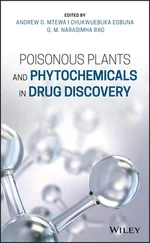92 92 (a) Boulianne, G.L., Hozumi, N., and Shulman, M.J. (1984). Production of functional chimaeric mouse/human antibody. Nature 312: 643–646.(b) Morrison, S.L., Johnson, M.J., Herzenberg, L.A., and Oi, V.T. (1984). Chimeric human antibody molecules: mouse antigen‐binding domains with human constant region domains. Proc. Natl. Acad. Sci. U. S. A. 81: 6851–6855.
93 93 (a) Lampson, L.A. and Levy, R. (1979). A role for clonal antigens in cancer diagnosis and therapy. J. Natl. Cancer Inst. 62: 217–220.(b) Levy, R., Warnke, R., Dorfman, R.F., and Haimovich, J. (1977). The monoclonality of human B‐cell lymphomas. J. Exp. Med. 145: 1014–1028.
94 94 Miller, R.A., Maloney, D.G., Warnke, R., and Levy, R. (1982). Treatment of B‐cell lymphoma with monoclonal anti‐idiotype antibody. N. Engl. J. Med. 306: 517–522.
95 95 Pierpont, T.M., Limper, C.B., and Richards, K.L. (2018). Past, present, and future of rituximab – the world's first oncology monoclonal antibody therapy. Front. Oncol. 8: 163.
96 96 Maloney, D.G., Liles, T.M., Czerwinski, D.K. et al. (1994). Phase‐I clinical‐trial using escalating single‐dose infusion of chimeric anti‐Cd20 monoclonal‐antibody (Idec‐C2b8) in patients with recurrent B‐cell lymphoma. Blood 84: 2457–2466.
97 97 Brady, R.O., Kanfer, J.N., Bradley, R.M., and Shapiro, D. (1966). Demonstration of a deficiency of glucocerebroside‐cleaving enzyme in Gaucher's disease. J. Clin. Invest. 45: 1112–1115.
98 98 Brady, R.O., Pentchev, P.G., Gal, A.E. et al. (1974). Replacement therapy for inherited enzyme deficiency – use of purified glucocerebrosidase in Gauchers‐disease. New Engl. J. Med. 291: 989–993.
99 99 Brady, R.O. and Barton, N.W. (1994). Enzyme replacement therapy for Gaucher disease – critical investigations beyond demonstration of clinical efficacy. Biochem. Med. Metab. B 52: 1–9.
100 100 Brady, R.O. and Barton, N.W. (1996). Enzyme replacement and gene therapy for Gaucher's disease. Lipids 31: S137–S139.
101 101 Deegan, P.B. and Cox, T.M. (2012). Imiglucerase in the treatment of Gaucher disease: a history and perspective. Drug Des. Dev. Ther. 6: 81.
102 102 Breslow, R. (2016). Successful Drug Discovery, vol. 2 (ed. W.E.C. János Fischer), 1–11. Weinheim: Wiley‐VCH.
103 103 Yoshida, M., Kijima, M., Akita, M., and Beppu, T. (1990). Potent and specific‐inhibition of mammalian histone deacetylase both invivo and invitro by trichostatin‐A. J. Biolumin. Chemilumin. 265: 17174–17179.
104 104 Finnin, M.S., Donigian, J.R., Cohen, A. et al. (1999). Structures of a histone deacetylase homologue bound to the TSA and SAHA inhibitors. Nature 401: 188–193.
105 105 Kelly, W.K., Richon, V.M., O'Connor, O. et al. (2003). Phase I clinical trial of histone deacetylase inhibitor: suberoylanilide hydroxamic acid administered intravenously. Clin. Cancer Res. 9: 3578–3588.
106 106 Molina, A.M., Van Der Mijn, J.C., Christos, P. et al. (2020). NCI 6896: a phase I trial of vorinostat (SAHA) and isotretinoin (13‐cis retinoic acid) in the treatment of patients with advanced renal cell carcinoma. Invest. New Drugs.
107 107 Schiedel, M. and Conway, S.J. (2018). Small molecules as tools to study the chemical epigenetics of lysine acetylation. Curr. Opin. Chem. Biol. 45: 166–178.
108 108 (a) Eckschlager, T., Plch, J., Stiborova, M., and Hrabeta, J. (2017). Histone deacetylase inhibitors as anticancer drugs. Int. J. Mol. Sci. 18: 1414.(b) Jiang, Z.F., Li, W., Hu, X.C. et al. (2019). Tucidinostat plus exemestane for postmenopausal patients with advanced, hormone receptor‐positive breast cancer (ACE): a randomised, double‐blind, placebo‐controlled, phase 3 trial. Lancet Oncol. 20: 806–815.(c) Yang, F., Zhao, N., Hu, Y. et al. (2020). The development process: from SAHA to hydroxamate HDAC inhibitors with branched CAP region and linear linker. Chem. Biodivers. 17: e1900427.(d) Zhang, Q., Wang, S., Chen, J., and Yu, Z. (2019). Histone deacetylases (HDACs) guided novel therapies for T‐cell lymphomas. Int. J. Med. Sci. 16: 424–442.
109 109 Lu, X.P., Ning, Z.‐Q., Li, Z.‐B. et al. (2016). Successful Drug Discovery (ed. W.E.C.J. Fischer), 89–114. Weinheim: Wiley‐VCH.
110 110 Prusoff, W.H. (1959). Synthesis and biological activities of iododeoxyuridine, an analog of thymidine. Biochim. Biophys. Acta 32: 295–296.
111 111 Clercq, E.D. and Holý, A. (2005). Acyclic nucleoside phosphonates: a key class of antiviral drugs. Nat. Rev. Drug Discovery 4: 928–940.
112 112 De Clercq, E., Descamps, J., De Somer, P., and Holy, A. (1978). (S)‐9‐(2,3‐Dihydroxypropyl)adenine: an aliphatic nucleoside analog with broad‐spectrum antiviral activity. Science 200: 563–565.
113 113 Declercq, E., Holy, A., Rosenberg, I. et al. (1986). A novel selective broad‐spectrum anti‐DNA virus agent. Nature 323: 464–467.
114 114 De Clercq, E., Sakuma, T., Baba, M. et al. (1987). Antiviral activity of phosphonylmethoxyalkyl derivatives of purine and pyrimidines. Antiviral Res. 8: 261–272.
115 115 Pradere, U., Garnier‐Amblard, E.C., Coats, S.J. et al. (2014). Synthesis of nucleoside phosphate and phosphonate prodrugs. Chem. Rev. 114: 9154–9218.
116 116 Wittayanarakul, K., Aruksakunwong, O., Saen‐Oon, S. et al. (2005). Insights into saquinavir resistance in the G48V HIV‐1 protease: quantum calculations and molecular dynamic simulations. Biophys. J. 88: 867–879.
117 117 Ghosh, A.K., Sridhar, P.R., Leshchenko, S. et al. (2006). Structure‐based design of novel HIV‐1 protease inhibitors to combat drug resistance. J. Med. Chem. 49: 5252–5261.
118 118 (a) Ghosh, A.K., Anderson, D.D., Weber, I.T., and Mitsuya, H. (2012). Enhancing protein backbone binding – a fruitful concept for combating drug‐resistant HIV. Angew. Chem. Int. Ed. 51: 1778–1802.(b) Ghosh, A.K., Chapsal, B.D., Weber, I.T., and Mitsuya, H. (2008). Design of HIV protease inhibitors targeting protein backbone: an effective strategy for combating drug resistance. Acc. Chem. Res. 41: 78–86.
119 119 Surleraux, D.L., Tahri, A., Verschueren, W.G. et al. (2005). Discovery and selection of TMC114, a next generation HIV‐1 protease inhibitor. J. Med. Chem. 48: 1813–1822.
120 120 King, N.M., Prabu‐Jeyabalan, M., Nalivaika, E.A. et al. (2004). Structural and thermodynamic basis for the binding of TMC114, a next‐generation human immunodeficiency virus type 1 protease inhibitor. J. Virol. 78: 12012–12021.
121 121 Umezawa, H., Imoto, M., Sawa, T. et al. (1986). Studies on a new epidermal growth factor‐receptor kinase inhibitor, erbstatin, produced by MH435‐hF3. J. Antibiot. (Tokyo) 39: 170–173.
122 122 Mohammadi, M., McMahon, G., Sun, L. et al. (1997). Structures of the tyrosine kinase domain of fibroblast growth factor receptor in complex with inhibitors. Science 276: 955–960.
123 123 Union, O.E. (2018). Health at a Glance: Europe 2018: State of Health in the EU Cycle, vol. 2020. Paris/Brussels: OECD Publishing/European Union.
124 124 NIH (2018). NIH Central Resource for Grants and Funding Information - Peer review, Vol. 2020, https://grants.nih.gov/grants/peer-review.htm(accessed 18 May 2020).

Oliver Plettenburgstudied chemistry at the University of Wuppertal and obtained his PhD under the supervision of Prof. Hans‐Josef Altenbach in 2000. He then moved to The Scripps Research Institute, La Jolla, to work under the guidance of Prof. Chi‐Huey Wong, where he focused on the synthesis of glycolipids. After this he joined the pharmaceutical industry at Aventis Pharma, working first in classical medicinal chemistry and developing projects from hit and lead optimization phase all the way to early clinical trials. Later he was more and more involved in establishing alternative concepts in pharmaceutical research, and lastly he held positions as “Head of Chemical Biology” and “Head of Biosensors and Chemical Probes” at Sanofi‐Aventis, Frankfurt, Germany. From 2016, Dr. Plettenburg serves as founding director of the Institute of Medicinal Chemistry of the Helmholtz Center Munich, and he is also a full professor for Medicinal Chemistry at Leibniz Universität Hannover. His research focuses on hit and lead optimization to open up new treatment options for severe diseases like diabetes, lung, inflammatory, or infectious diseases. Furthermore, he develops innovative targeted and smart drug delivery methods and works on the synthesis of novel imaging agents for in vivo monitoring of pathogenesis.
Читать дальше













